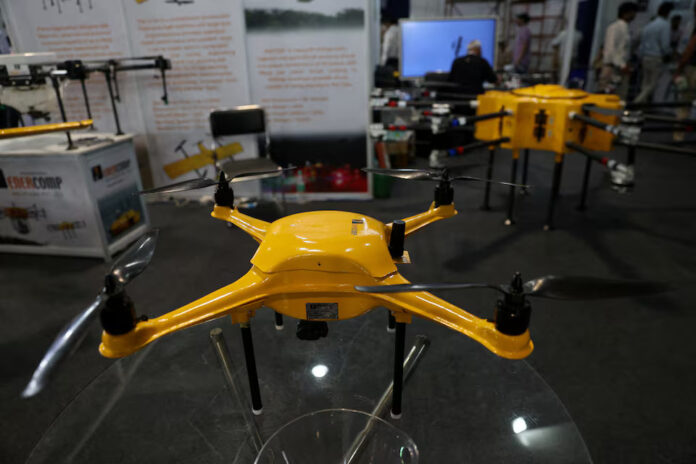India will launch a $234 million incentive programme for civil and military drone manufacturers to reduce reliance on imported components and counter Pakistan’s drone capabilities, which are supported by China and Turkey, three sources told Reuters.
India’s renewed push for indigenous drone development comes after a four-day clash with Pakistan in May, marking the first large-scale use of unmanned aerial vehicles (UAVs) by both countries. The two nuclear-armed neighbors are now locked in what officials describe as a drone arms race.
New Delhi plans to roll out a 20 billion Indian rupees ($234 million) programme over three years to support the manufacture of drones, components, software, counter-drone systems, and related services, according to two government officials and one industry source who spoke on condition of anonymity.
The programme’s budget far exceeds India’s previous production-linked incentive (PLI) scheme, launched in 2021 with a modest 1.2 billion rupees, aimed at helping drone startups attract investment and advance R&D. That effort saw limited success.
The civil aviation ministry, which is leading the initiative, and the defence ministry did not immediately respond to requests for comment.
Reuters previously reported India’s broader plan to ramp up local investment in UAVs, with government and military officials estimating total outlays could reach $470 million over the next 12 to 24 months through a phased approach.
Historically, India has relied on imports—especially from Israel, its third-largest arms supplier—for military-grade drones. But recent years have seen a rise in domestic drone production for both military and civilian purposes. However, dependency on Chinese components—including motors, sensors, and imaging systems—remains a concern.
The new scheme aims to ensure that at least 40% of key drone components are made in India by the end of the fiscal year 2028 (April–March), the two government sources said.
“During (the India-Pakistan) conflict there was quite a lot of use of drones, loitering munitions and kamikaze drones on both sides,” Indian Defence Secretary Rajesh Kumar Singh said last week.
“The lesson that we’ve learned is that we need to double down on our indigenisation efforts to ensure that we build a large, effective, military drone manufacturing ecosystem.”
Although India bans the import of fully built drones, components are still allowed. Under the new initiative, manufacturers who source parts domestically will be eligible for additional incentives.
The Small Industries Development Bank of India (SIDBI) will also support the programme by offering low-interest loans for working capital, research, and development needs.
There are currently more than 600 drone manufacturing and associated companies in India, according to industry estimates provided by a source involved in the policy discussions.




